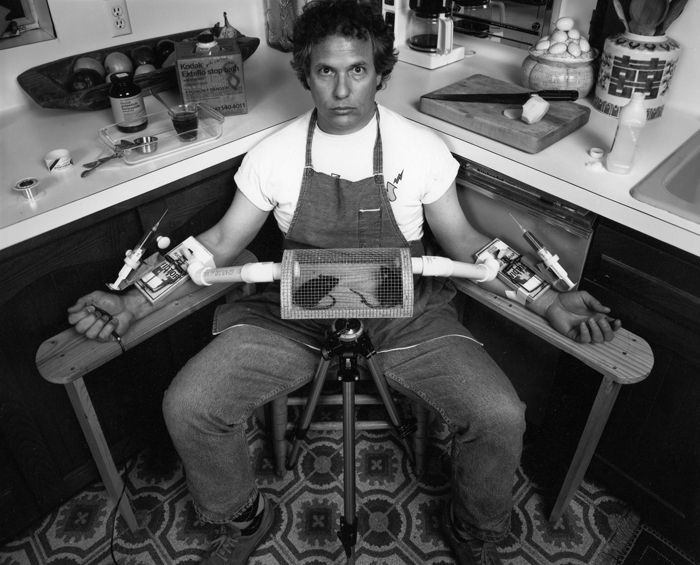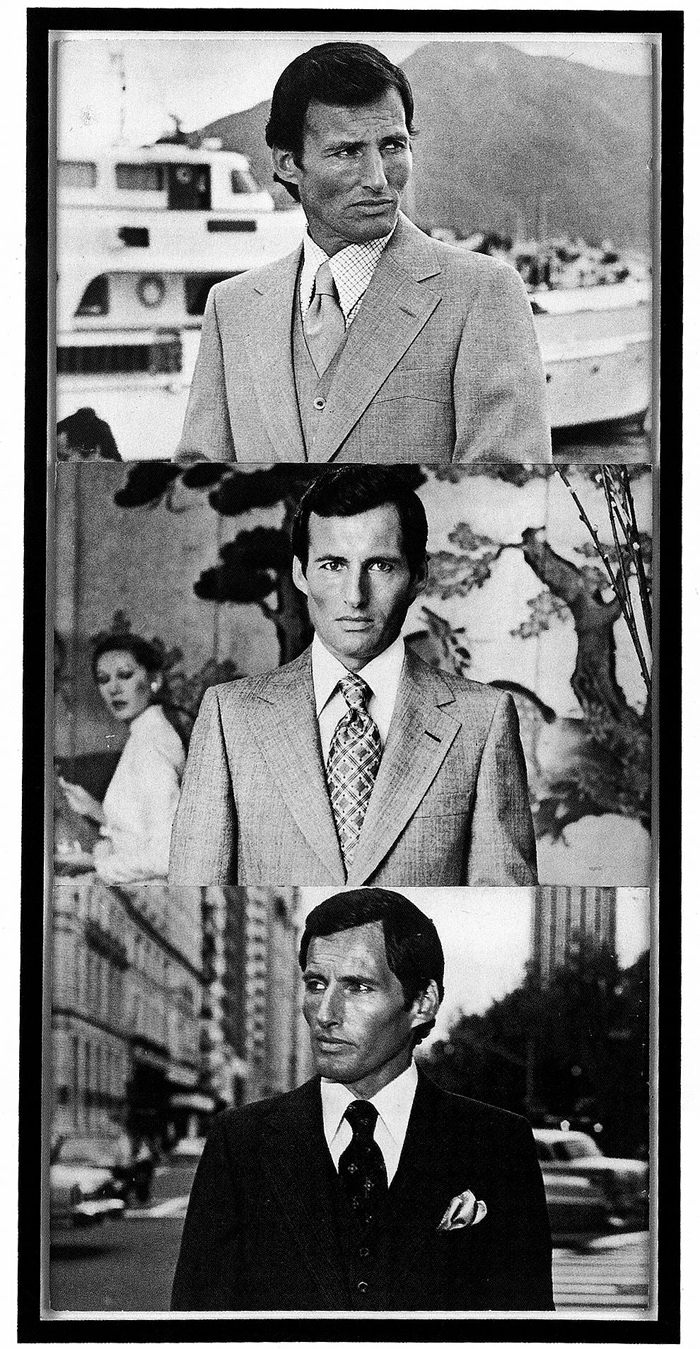
Bill Thomas, Rats and Syringes, 1992.
In his suicide self-portraits of the 1990s, Bill Thomas offers himself willingly to Death, on the condition that the Reaper travel a humiliating road to meet him. The photographer calmly awaits the Horesemen in absurdly convoluted yet entirely functional deathtraps of his own creation.
Thomas cheats Death every time, of course, thanks to last-minute interceptions from the immortalizing power of photography. With a well-timed squeeze on his cable release, Thomas is captured by his camera, sequestered to a literally death-defying, eternal existence on photography’s metaphysical plane of suspended animation.
In Rats and Syringes, Thomas acknowledges his pact with photography directly: when the rats on his lap find the cheese on their traps (inadvertent triple suicide!), two syringes filled with a common darkroom chemical, potassium ferricyanide, will plunge into his arms, killing the photographer instantly. Suicide a la Kodak.
But Thomas is again playing Lucy van Pelt to Death’s Charlie Brown, here with a twist. Promising not to yank the football away this time, he even offers Death a special handicap: one of photography’s own alchemical potions to use against him.
Eyes locked on its target, Death charges the ball.
Chas Bowie, Writer

Richard Prince, Untitled (same man looking in different directions), 1977-78. Black and white photographs; 59 5/8 x 29 1/2 inches. © Richard Prince. Courtesy Gladstone Gallery, New York.
In the spring of 1979, I occasionally would walk from lower Manhattan (where I lived in a loft) to the New School of Social Research. As a graduate student of Media Studies, my thoughts were often preoccupied with semiotics, Roland Barthes, and media ecology. Perhaps this is why I stopped at the usually book-laden window of Three Lives & Company bookstore at West 10th Street and Waverly Place. An enlarged black and white photograph that appeared to be a advertisement of a hollow cheeked man with a tan in a stilted pose was put on view, but something was amiss. It seemed to sell nothing and had no obvious relationship to the books that were displayed in front of it. I entered the bookstore and asked what was the meaning of the photo and was told it was a work of art by Richard Prince. Soon after, I had a similar experience–one that Roland Barthes would call “pre-hypnotic”–with a photograph above Helene Winer’s desk at Artists Space. When I commented on the work, Helene replied, “Oh, this is our receptionist Cindy’s work. Go tell her you like it.” So I went to introduce myself to Cindy Sherman. “There is someone I think you should meet,” I said.
Carol Ann Klonarides, Curator
